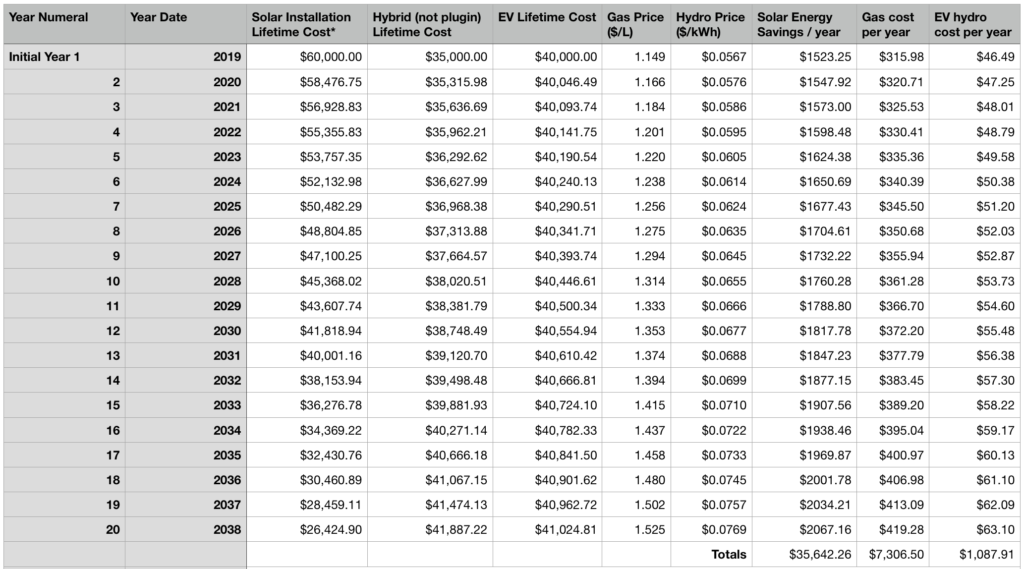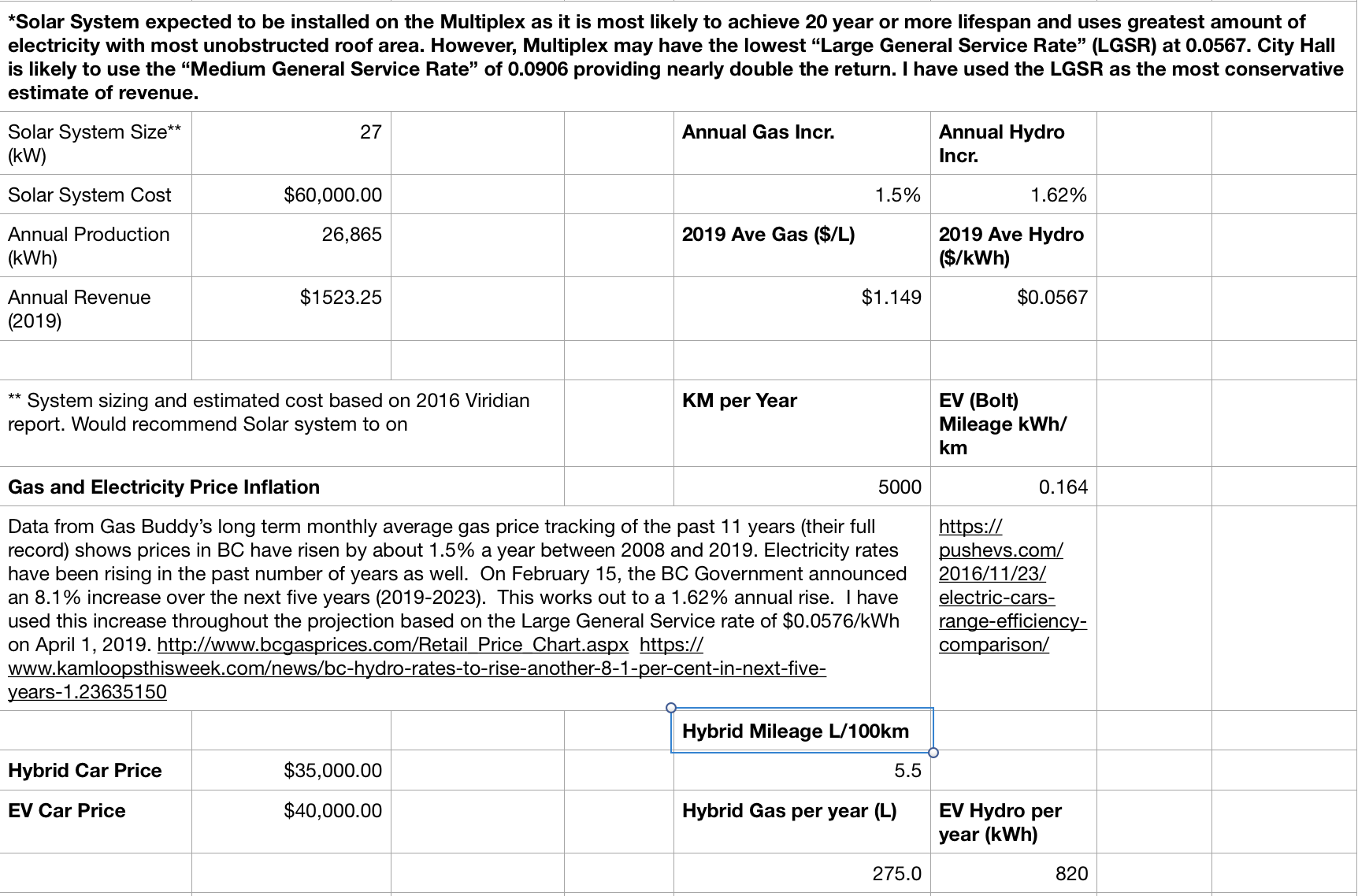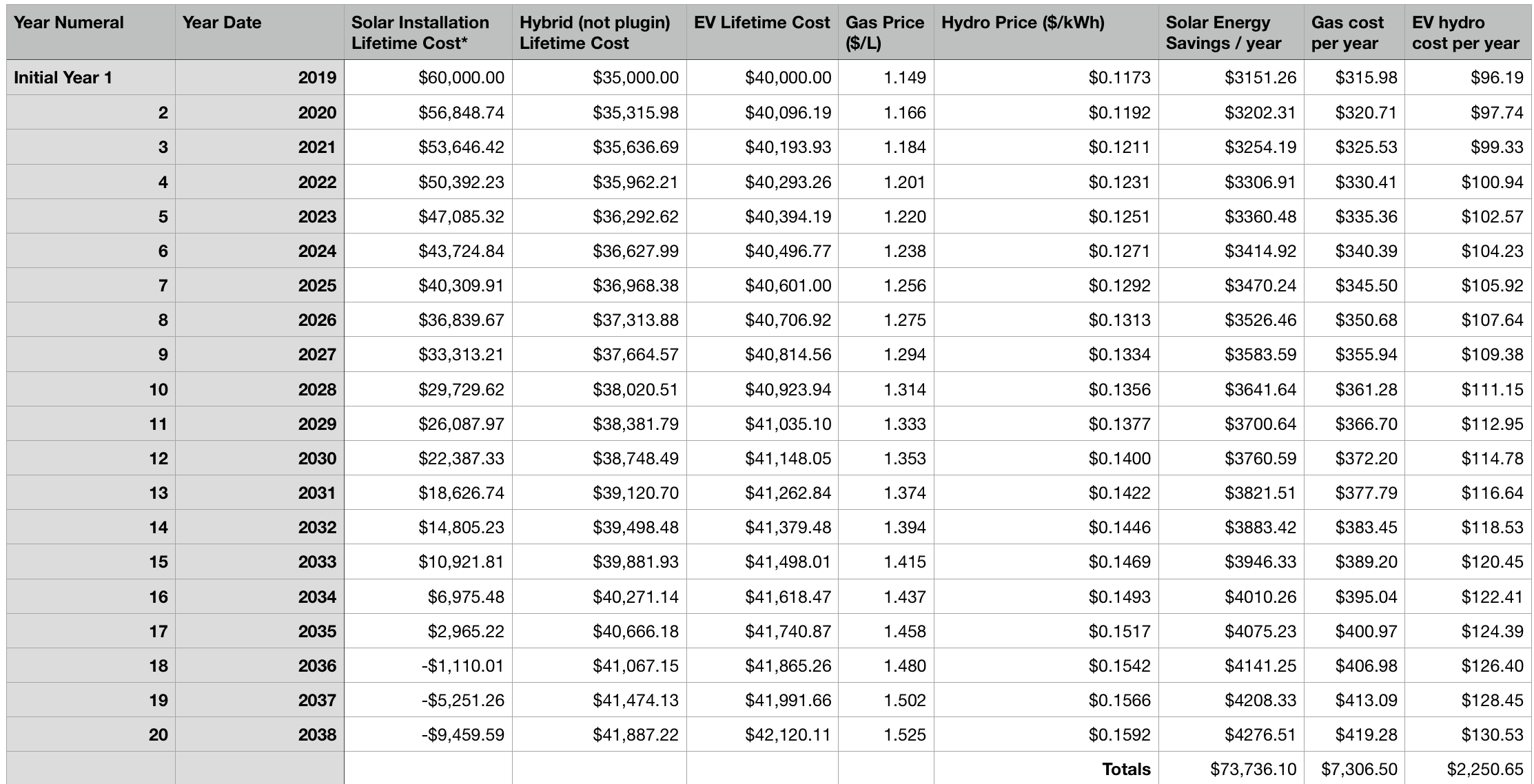On Tuesday February 19, the City Council of Port Alberni will be having one of its many Budget deliberations. The meeting is at 7:30PM after the Committee of the Whole at 2:30PM and McLean Mill meeting at 6:30PM. Agendas here.Item #2 on the agenda is: “Director of Finance – 2016 Solar Installation Project/Carbon Trust Reserve Fund “. The recommended motion is:
That the report from the Director of Finance dated February 13, 2019 be received, and Council for the City of Port Alberni cancel the proposed Solar Installation project, direct the $100,000 funding back into the Carbon Trust Reserve Fund, and allocate $48,000 to the purchase of a hybrid vehicle for the Engineering and Public Works department.
I’m going to say right out front that I am not necessarily opposed to this re-allocation. A lot has changed with the feasibility of grid-tie renewable energy at BC Hydro since the NDP took power, especially for non-residential installations like had been originally envisioned. Most importantly, in 2018 the Standing Offer and Micro Standing Offer Programs were put on hold, and as of February 14, 2019 they are suspended indefinitely.
February 14, 2019
As a result of government’s comprehensive review of BC Hydro, a number of measures to lower our costs to keep rates low are being implemented, including reducing the amount of future energy purchases from independent power producers.Effective immediately, our Standing Offer and Micro Standing Offer Program are suspended indefinitely, and we will not accept new applications or award any new electricity purchase agreements.
There is good reason for this. BC Hydro was paying high, long term, fixed rates to Independent Power Producers to buy their power under the Standing Offer Program. The rates were 9c/kWh or higher, compared to the much lower cost of its own “legacy” power. This includes the Upnit Power project of which the Hupacasath First Nation owns a majority share and the City of Port Alberni holds a 5% share. The Mayor sits on the Board. More on IPPs after I address the Solar panels and cars.
These changes mean that a large installation envisioned in the City’s Veridian Report for the Multiplex or Industrial Heritage building rated at higher than 100 kiloWatts (kW) is no longer possible. However, BC Hydro still offers the “Net Metering Program” for systems up to 100 kW. Another change made is that Net Metering installations can *only offset* consumption, they cannot have a surplus into the grid at the end of the year. This means it makes the most sense to install solar panels only on buildings with the highest hydro usage at the highest hydro rate.
I would suggest that the City use the $100,000 to do both a smaller, 27kW system capped at $60,000 under BC Hydros’ “Complex Net Metering” meant for business and public buildings that would still provide a return on investment and important experience that could be added to incrementally later. Then purchase a new Plugin Hybrid (PHEV) or Electric (EV) vehicle with the remaining $40,000. This should be possible when including the $5000 Rebate for PHEVs or EVs.
The fundamental difference between a Solar installation and a purchase of a vehicle is the former is an investment, while the latter is a cost.
To illustrate that there is, of course, a spreadsheet (download in Numbers, and Excel). For the cars, I assume 5000km annually and have given one estimate for a *non plugin* hybrid car (like a Toyota Prius) and one for a plugin all electric EV (like a Chevy Bolt). It is too complicated to estimate the cost of a Plugin Hybrid (PHEV)… which would have both EV and gas costs. We can safely assume it would be somewhere in the middle.


I have used the lowest possible Hydro rate of 5.67 cents/kWh. This is the “Large General Service Rate” likely used at the Multiplex, though there may be more than one service at the Multiplex. It would benefit the City to install any solar panels wherever they would offset the highest Hydro rates. Here are the Returns at the different Business and Residential rates:
| Hydro Category | Rate | Solar Return | EV “fuel” |
| Large Service | 5.67 ¢/kWh | $35,642 | $1,088 |
| Medium Service | 9.06 ¢/kWh | $56,952 | $1,738 |
| Small Service | 11.73 ¢/kWh | $73,736 | $2,250 |
| Tier 1 Residential | 8.84 ¢/kWh | $55,569 | $1,696 |
| Tier 2 Residential | 13.26 ¢/kWh | $83,353 | $2,544 |
Here is the same spreadsheet using the “Small Service” rate. Notice the solar panels fully pay off in year 17.

The difference between the vehicles and solar panels should be obvious and should put them under different types of considerations. The solar panels can be seen as an investment that returns the City money. The vehicles will only ever cost the City more whether they are gas or electric. The Veridian report estimated 30yr returns of between 3.4% and 4.5% for the solar panel installations. This is much better than what the City receives on most of its invested funds.
The spreadsheets only compare the energy costs, either revenue from the solar panels, or operating costs for fuel for the gas and electric cars. Having owned solar panels for the better part of 10 years, I can say the maintenance is minimal. Similarly, the maintenance on an electric car versus a standard gas car is much reduced.
The most interesting variable in the next 20 years, however, will be the cost of energy. Will gas really only cost an average of $1.50/L in 2038? Probably not if we are serious about climate change. Will hydro only cost 15¢/kWh? Probably not if we’re building out electricity infrastructure to transition to a carbon-zero economy. That means the “payoff” dates are very likely to be shorter than we see here.
What is more certain though, is that the price of solar panels will go down. So buying a small system that can be added to later makes sense. To emphasize, rising Hydro rates are “good” for Solar installations, but “bad” for car purchases. I am using a 1.5% annual rate increase for gas prices and 1.62% increase for BC Hydro (based on the just announced 8.1% over five years). I would consider both of those to be conservative estimates.
Back to Independent Power Producers and what it means for Municipalities and others.
As I mentioned at the start, in addition to announcing the 8.1% rate increase for residential customers, the Province also announced the indefinite suspension of all purchase of power from private business. Is this good or bad?
Certainly something like a $1.1 Billion investment in a wind farm in the North East of BC is good! It is the future of energy jobs in the world. However, for BC Hydro customers, that wind farm is not necessarily good news because BC Hydro is probably buying that power for around 10 cents per kWh, much more than our legacy dams which produce power at about 3-5c/kWh. That creates a big financial gap, and that is why BC Hydro is in the precarious situation that it is.
The rise of IPPs in BC gave rise to truly good things, like the strong interest from First Nations, including pioneers like Hupacasath and Judith Sayers who have built run of river or other power projects to benefit their First Nations through provision of clean power. Unfortunately, the model was never sustainable for their only customer, BC Hydro. So it could not last.
What is the way forward for independent power in BC?
Well, if you’re an evil socialist like me, private power is not the preferred way anyway. It should be BC Hydro or Community owned. Communities must be able to create their own power.
I believe strongly that as we transition our economy fully to renewable power that we will not be able to rely on huge installations (like Site C). And as the climate changes and limits on GHG production tighten, the opportunity for those huge legacy power production facilities, including nuclear, will fade.
I believe we, including cities, must work extremely hard to achieve local net-zero energy consumption/production for all buildings by:
- installing solar or other renewable energy systems to offset any consumption.
- reducing heating/cooling of all buildings to as near zero as possible.
Cities will always have buildings, like a Multiplex ice arena or large conference centre, that will use more energy than it can generate on the footprint of the building itself.
A Suggestion: BC Hydro “COP” Community Offset Program
I would like to see BC Hydro create a program so that a Municipality like Port Alberni, or a First Nation like Tseshaht or Hupacasath, could have their entire electricity usage and the rate they pay calculated as a whole.
For example, in the Veridian report, the consultant examined 6 buildings. Let’s act as if those 6 buildings represent the entire electricity consumption of the City of Port Alberni.

Those six buildings use a total of 1,753,209 kiloWatt hours (1700 Megawatt Hours) of energy per year so this is our “total” for the City.
In my “Community Offset Program” this would be the maximum the City would be able to generate per year just like the Net Zero program BC Hydro offers now.
Each of those buildings will have its own BC Hydro connection and account, some buildings may even have more than one. A City like Port Alberni has dozens if not hundreds of separate accounts with BC Hydro. So in order to determine what rate Hydro pays the City for its “COP” installation, it could take an average of the rate paid by each of those accounts in a year. Let’s say this year it could be 7 cents per kWh.
The “aggregate” nature of the program would extend to the production side as well. So Port Alberni could install one large 1.8 megawatt solar, wind, hydro, or biomass facility to produce that 1,700 MWh of power in a year. Or it could install a number of smaller installations to make up the number.
Either way, the City can invest in producing its own energy and become self-sufficient, and BC Hydro keeps rates low.

